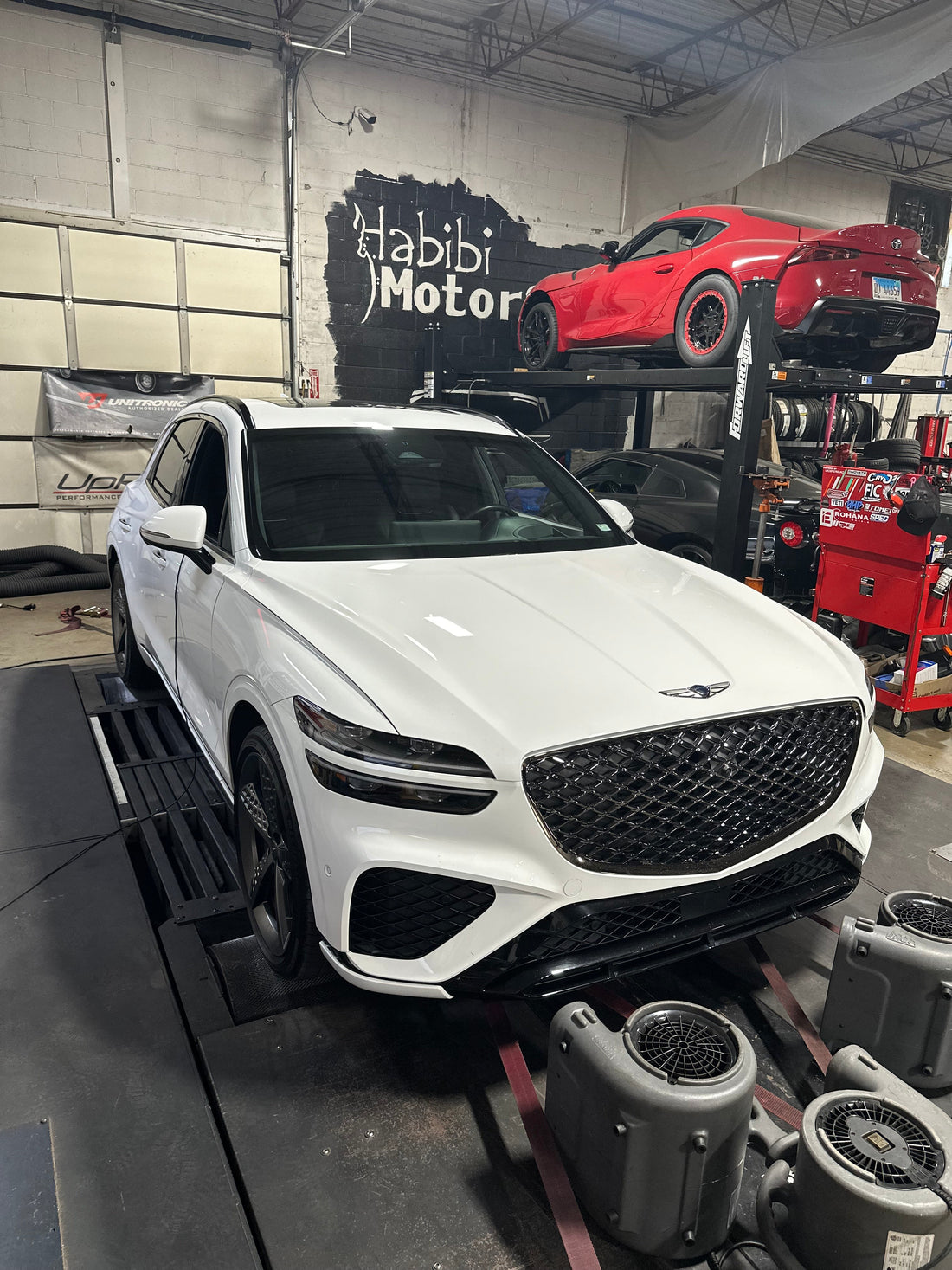
How Your Vehicle’s Drivetrain Robs Horsepower: Understanding Drivetrain Loss
Share
How Your Vehicle’s Drivetrain Robs Horsepower: Understanding Drivetrain Loss
Summary
Not all the power your engine produces makes it to the wheels. If your engine generates 500 horsepower at the crank, but your dyno results show only 425 horsepower at the wheels, you’re experiencing drivetrain loss—a reduction in power due to friction, heat, and mechanical inefficiencies within the drivetrain components. The type of drivetrain (rear-wheel drive, front-wheel drive, all-wheel drive) significantly impacts how much power is lost. On average, drivetrain losses range from 10-25%, depending on factors like transmission type, differential design, and the number of driven wheels. In this article, we’ll break down the science behind drivetrain loss and how each component plays a role in reducing the power that actually makes it to the pavement.
What is Drivetrain Loss?
Drivetrain loss, also called parasitic loss, refers to the reduction in power as it travels from the engine to the wheels. When an engine produces 500 horsepower at the crankshaft (crank horsepower), that power has to pass through multiple components—each of which introduces some resistance, heat, and mechanical inefficiencies. By the time the power reaches the wheels (wheel horsepower or WHP), a significant percentage has been lost.
Typical Drivetrain Loss Percentages
Drivetrain loss varies by vehicle layout and drivetrain type. The general rule of thumb is:
• Rear-Wheel Drive (RWD): ~15% loss
• Front-Wheel Drive (FWD): ~10-15% loss
• All-Wheel Drive (AWD): ~20-25% loss
This means that a 500 HP engine in a RWD car might put down 425 WHP, while the same engine in an AWD car might only put down 400 WHP or less due to additional losses from extra differentials, driveshafts, and transfer cases.
Where Does the Power Go? Breaking Down Drivetrain Loss
1. Transmission Losses
The transmission is responsible for changing gear ratios and transferring power from the engine to the driveshaft. Whether automatic or manual, transmissions create friction and resistance:
• Manual Transmissions: Generally more efficient, with 2-5% power loss. However, heavier clutch assemblies and synchros still create drag.
• Automatic Transmissions: Typically less efficient, with 5-10% power loss due to the torque converter (on non-DCT automatics), hydraulic systems, and planetary gearsets.
• Dual-Clutch Transmissions (DCT): More efficient than traditional automatics, often losing only 3-7% of power.
2. Driveshaft Losses
In RWD and AWD vehicles, a driveshaft transfers power from the transmission to the rear wheels (or all four wheels in AWD setups). The longer and heavier the driveshaft, the greater the loss.
• Steel driveshafts are heavier and cause more rotational inertia, leading to higher losses.
• Carbon fiber or aluminum driveshafts reduce weight and rotational mass, improving efficiency and reducing losses.
3. Differential & Axle Losses
The differential is responsible for splitting power between the drive wheels while allowing them to rotate at different speeds in corners. The gearing and fluid resistance inside the differential contribute to power loss:
• Open Differentials: Typically more efficient, but offer poor traction performance.
• Limited-Slip Differentials (LSDs): Offer better traction but introduce additional friction, increasing power loss slightly.
• AWD Systems: Include multiple differentials and a transfer case, which increases drivetrain loss significantly.
4. Wheel & Tire Losses
Once power reaches the axles, the wheels and tires introduce additional resistance:
• Heavy wheels (cast aluminum, steel) require more energy to rotate, reducing power to the ground.
• Wide, sticky tires (like high-performance summer tires) increase rolling resistance and friction, absorbing more power.
• Proper tire inflation can impact efficiency—underinflated tires create more rolling resistance, further increasing losses.
Drivetrain Loss in AWD vs. RWD vs. FWD Vehicles
Rear-Wheel Drive (RWD)
• Power travels from the engine → transmission → driveshaft → differential → rear wheels.
• Fewer moving parts than AWD, so losses are generally lower (~15%).
• Performance cars favor RWD for better weight distribution and reduced drivetrain loss compared to AWD.
Front-Wheel Drive (FWD)
• Power goes from the engine → transmission → differential (built into transaxle) → front wheels.
• No separate driveshaft or rear differential, leading to slightly lower losses (~10-15%).
• However, torque steer and uneven weight distribution make high-horsepower applications less effective.
All-Wheel Drive (AWD)
• Power is sent through multiple differentials, a transfer case, and additional driveshafts, increasing friction and mechanical resistance.
• The extra components absorb more power, leading to higher drivetrain losses (20-25%).
• AWD provides better traction but comes at the cost of efficiency.
Can You Reduce Drivetrain Loss?
While drivetrain loss is inevitable, you can minimize it through strategic modifications:
1. Lightweight Components – Upgrading to a carbon fiber driveshaft or lightweight flywheel reduces rotational inertia.
2. Efficient Transmission – Manual and DCT transmissions have less loss compared to traditional automatics.
3. Low-Friction Fluids – High-quality synthetic transmission and differential fluids reduce internal friction and heat buildup.
4. Performance Differentials – Upgrading to a more efficient LSD can help reduce drag while improving traction.
5. Wheel & Tire Choices – Lighter wheels and properly inflated tires reduce rolling resistance.
Final Thoughts
Drivetrain loss is an unavoidable reality in every vehicle, but understanding where horsepower is lost can help you make smarter performance upgrades. Whether you’re aiming for better efficiency or maximum power to the wheels, reducing parasitic losses can help you get closer to your engine’s true potential.
If you’re chasing every last bit of performance, focusing on lightweight components, efficient fluids, and smart drivetrain upgrades will help maximize your wheel horsepower and ensure more of your engine’s power makes it to the pavement.
